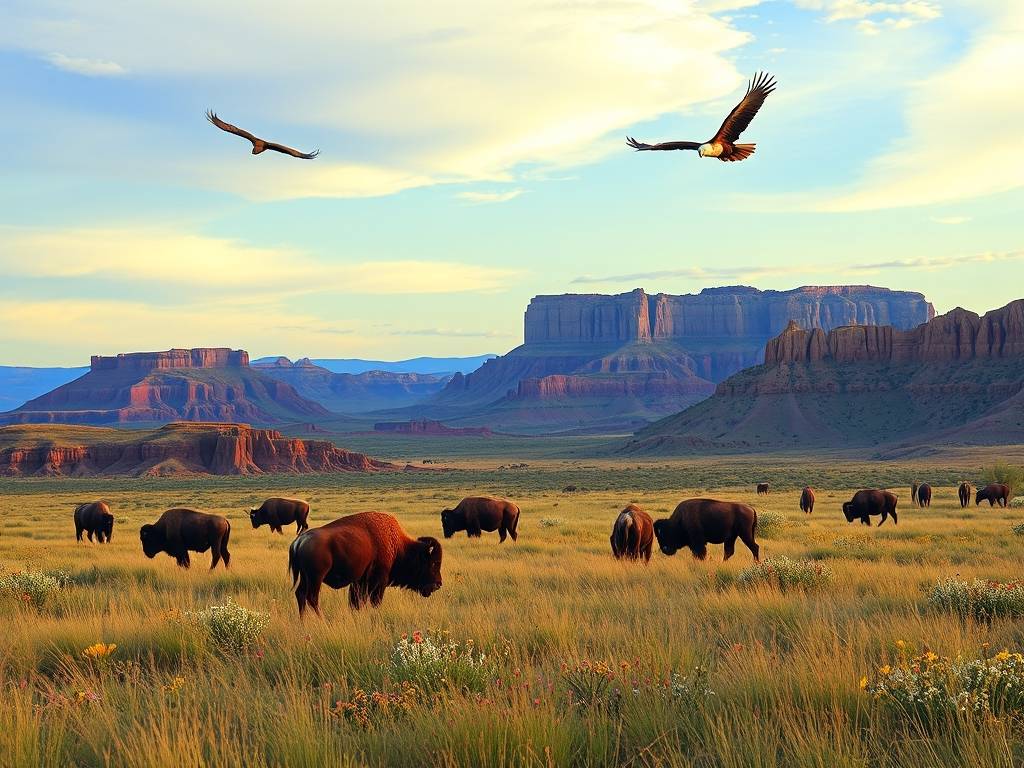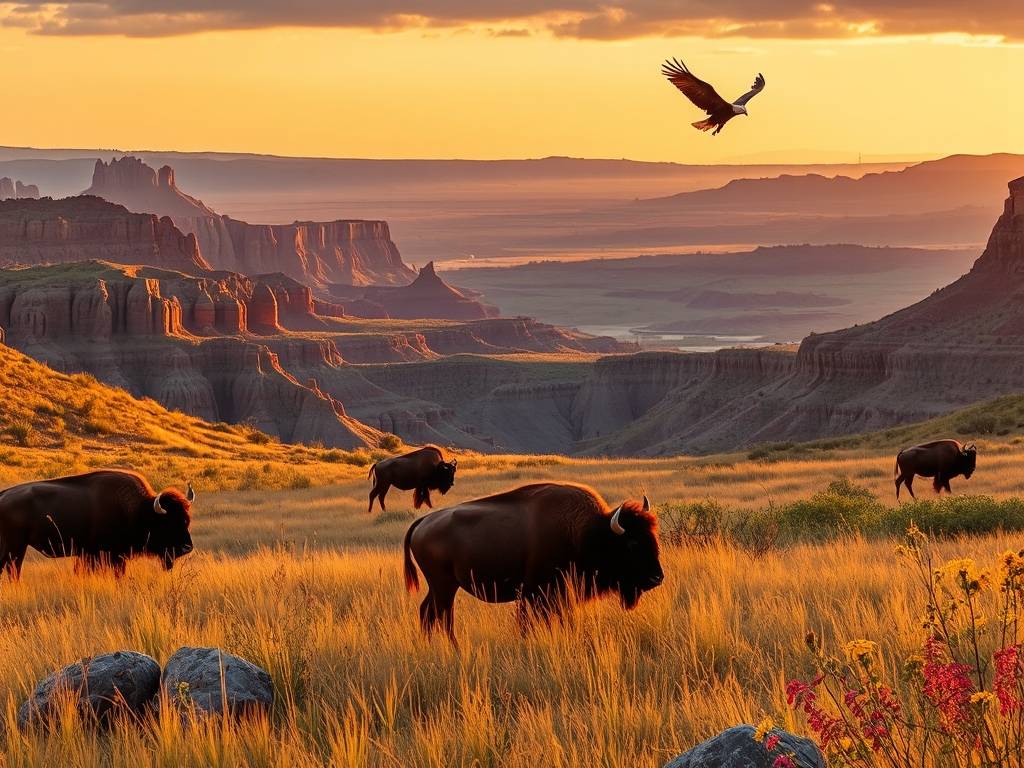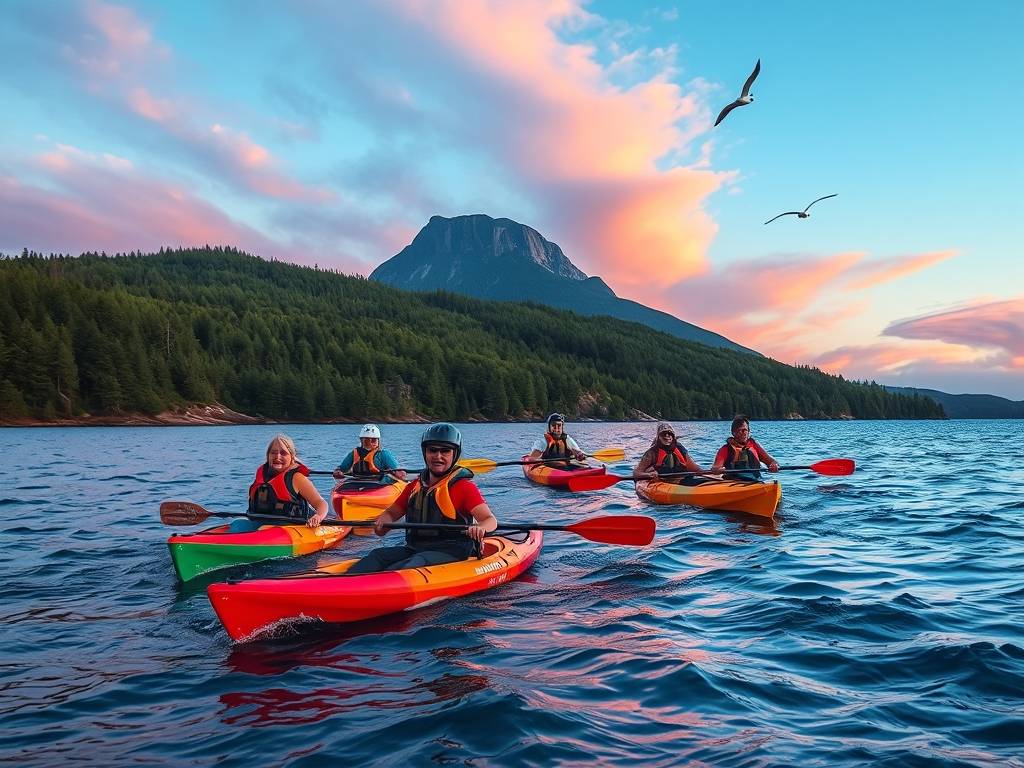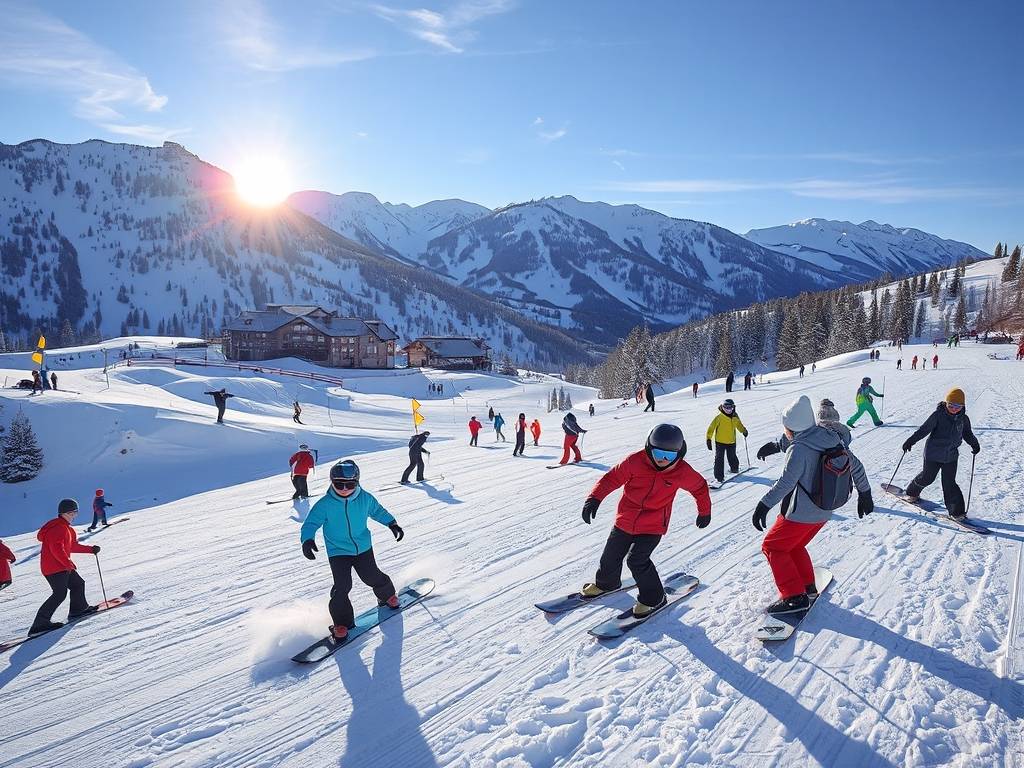USA Travel
US Travel: Wildlife Safari in South Dakota’s Badlands National Park
A Wild Encounter: Discovering the Untamed Beauty of South Dakota's Badlands National Park
The Great Plains of the United States hold a secret, a landscape so startling and primal it feels like a world forgotten by time. This is not just a destination; it's an experience. For the traveler seeking an authentic American wildlife safari, a journey into the heart of South Dakota's Badlands National Park offers a profound connection to nature, history, and the raw, untamed spirit of the West. Forget the curated gardens and manicured paths; here, the earth itself tells a story of erosion, resilience, and breathtaking beauty.
Your adventure begins the moment the iconic skyline of the Badlands formations pierces the horizon. These vast, layered rock formations, sculpted over millions of years by wind and water, create a maze of deep canyons, towering spires, and sharp pinnacles. The name "Badlands" comes from the Lakota phrase "mako sica," meaning "land bad," and early French trappers called it "les mauvaises terres à traverser" – "the bad lands to travel across." For them, it was a harsh and formidable barrier. For you, it is a gateway to one of the most unique South Dakota wildlife viewing experiences on the continent.

The true magic of a Badlands National Park wildlife safari lies in its residents. This 244,000-acre park is one of the largest mixed-grass prairies in the United States, providing a crucial sanctuary for an array of fascinating creatures. The most famous ambassador is undoubtedly the American Bison. Seeing a herd of these majestic beasts, their massive heads bowed to graze against a backdrop of striated rock walls, is a sight that stirs the soul. It’s a living snapshot of the America that once was, a powerful reminder of the wilderness that shaped a nation. Remember to always maintain a safe distance—at least 100 yards—as these are wild and powerful animals.
But the bison are just the beginning. As you explore, keep your eyes peeled for the sure-footed Bighorn Sheep, often seen nimbly traversing the steep cliffs that would be impossible for most other animals. These magnificent creatures were reintroduced to the park and have thrived, becoming a symbol of its successful conservation efforts. Another quintessential Badlands animal encounter is with the black-tailed prairie dog. These highly social animals live in vast "towns," and their constant, chirping communication is a delightful soundtrack to your visit. Watching them pop in and out of their burrows is endlessly entertaining and offers a fantastic opportunity for photography.
For those seeking a more elusive spectacle, the park is also home to the endangered black-footed ferret, one of the rarest mammals in North America. Spotting one requires luck and often a guided night tour, but knowing they are there, part of a critical recovery program, adds another layer of significance to your visit. Coyotes, mule deer, and a variety of reptiles like the prairie rattlesnake also call this place home, each playing a vital role in the delicate ecosystem.
To truly maximize your wildlife watching in Badlands National Park, strategy is key. The animals are most active during the cooler hours of the day. Plan your drives and hikes for early morning or late afternoon, which also coincides with the most spectacular light for photography. The golden hour glow on the buttes and the animals themselves is simply magical.
Two main routes offer unparalleled access. The Badlands Loop Road (Highway 240) is the park's scenic artery, winding for 31 miles past the most dramatic vistas and numerous pull-outs and trailheads. For a more rugged and secluded Badlands National Park wildlife safari, venture onto the Sage Creek Rim Road. This unpaved but well-maintained gravel road takes you deeper into the wilderness, offering a higher probability of seeing bison herds and the expansive prairie dog towns. Here, you can truly feel the immense scale and solitude of the prairie.

Don’t just stay in your car. The park’s network of trails allows for an immersive experience. Easy walks like the Fossil Exhibit Trail or the Door Trail provide stunning views with minimal effort. For the more adventurous, a hike on the Castle Trail or the Medicine Root Loop gets you away from the crowds and into the heart of the landscape where wildlife sightings feel more personal and rewarding. Always carry plenty of water, wear sturdy shoes, and be aware of your surroundings.
Beyond the wildlife, the park is a world-class fossil hunting in Badlands South Dakota destination. The sedimentary rocks are a treasure trove of ancient life, continuously eroding to reveal fossils of prehistoric creatures like saber-toothed cats, three-toed horses, and giant rhinoceros-like animals called titanotheres. While you cannot collect fossils within the park, visiting the Fossil Preparation Lab or joining a ranger-led talk can be a fascinating addition to your trip, connecting the wildlife you see today with the ancient inhabitants of this land.
A complete South Dakota Black Hills and Badlands trip would be incomplete without acknowledging the deep cultural heritage. The Badlands are sacred to the Lakota people, and their connection to this land spans generations. Taking a moment to appreciate this cultural significance adds a rich, historical dimension to your visit. Consider combining your safari with a trip to the nearby Pine Ridge Indian Reservation or learning about the history at the Ben Reifel Visitor Center.
Practical tips for your best time to visit Badlands for wildlife are crucial. Spring (April-June) and Fall (September-October) offer mild temperatures and high animal activity, making them ideal. Summers can be intensely hot, while winters are cold and snowy, but offer a stark, beautiful solitude. No matter when you come, be prepared for rapidly changing weather—a sunny day can quickly turn into a dramatic thunderstorm, which is an awe-inspiring experience in itself.
In the end, a wildlife safari in Badlands National Park is more than just a checklist of animals seen. It’s about the feeling of the wind across the prairie, the scent of sage after a rain, the profound silence of the night sky ablaze with stars, and the humbling sight of a bison standing its ground. It’s an adventure that redefines your understanding of American wilderness. It’s a journey that challenges you, rewards you, and leaves you with a deep, enduring appreciation for a land that is, in the most beautiful way, truly "bad." So pack your binoculars, your sense of wonder, and your hiking boots. An unforgettable encounter with the wild heart of America awaits.
相关文章
- US Travel: Surfing in California’s Malibu Beach
- US Travel: Canoeing in Minnesota’s Boundary Waters
- US Travel: Skiing in Utah’s Park City Mountain Resort
- US Travel: Snowboarding in Colorado’s Vail Ski Resort
- US Travel: Kayaking in Maine’s Acadia National Park
- US Travel: Hiking to Arizona’s Grand Canyon South Rim
- US Travel: Hot Air Balloon Rides in New Mexico’s Albuquerque
- US Travel: Trail Running in Oregon’s Columbia River Gorge
- US Travel: Fly-Fishing in Wyoming’s Snake River
- US Travel: Beachcombing in Washington’s Olympic National Park
发表评论
评论列表
- 这篇文章还没有收到评论,赶紧来抢沙发吧~


